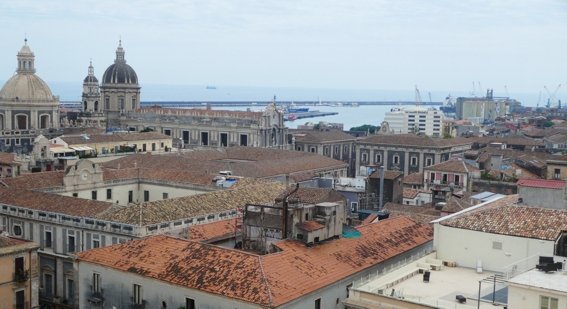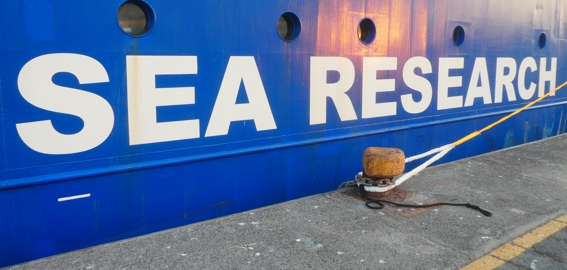
Study area: Italy - Greece
Below you see the study area in between Italy and Greece, including the northern boundary of the African continent where the desert dust is coming from. The white line roughly marks the planned cruise track.
If you click on the map, you'll be taken to an external website (SailWX) where you can see the actual position of RV Pelagia.
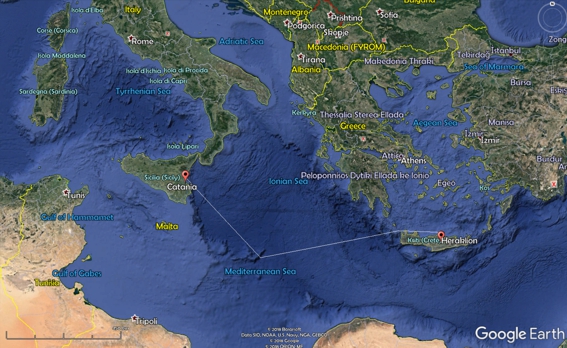
Daily updates from here >>>
Below you will find (almost) daily updates of our results and whereabouts:
Finally: Crete
At 8 AM we are entering Heraklion harbour, meaning that this short expedition is over.
It was a very successful one, despite very tight planning we managed to do everything that needed done, and which was only possible through the superb collaboration with- and support of Master John Ellen and his excellent crew. Bye for now, safe travels and see you soon!
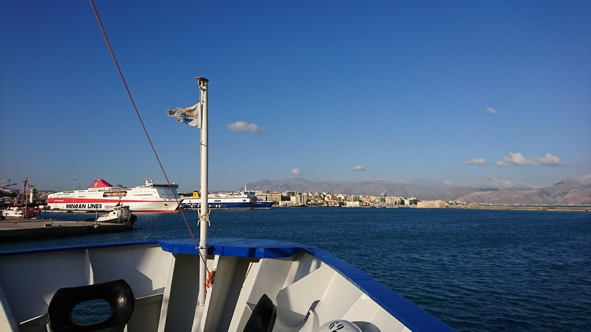
Monday 13 August: dust at sunrise
We are approaching our destination: Crete. This trip’s last sunrise shows how also the morning sun is coloured red, thanks to dust particles in the atmosphere!
The little island is called “Dia”, just off the coast of Heraklion.

Sunday 12 August: sampling dust from the atmosphere
On our transit towards Crete we are still sampling the air for Saharan dust. To this end, we have installed two (blue) so-called Hi-Volume --more than 1100 m³ per minute-- air samplers, which pump air through a filter.
We obviously want to avoid contamination from the ship's exhaust, and therefore, we have installed a wind vane, which switches off the machines as soon as the wind is coming from behind. In addition --although we did not need it this time-- there is a rain sensor, which also tells the instruments to stop sampling as soon as it starts to rain.
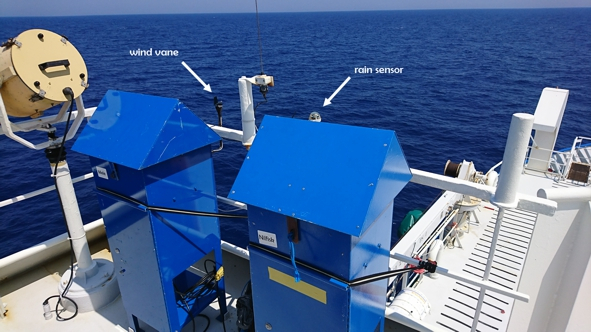
Although the skies are relatively clear, there is still some colouration on the filters. The material that we usually collect off northwestern Africa is bright orange, here in the Mediterranean it seems between orange and grey. We are very sure that the grey colour cannot originate from contamination from the ship's exhaust. Instead, the greyish material could well be soot from (forest) fires. Analyses in the lab back at NIOZ will hopefully tell us.
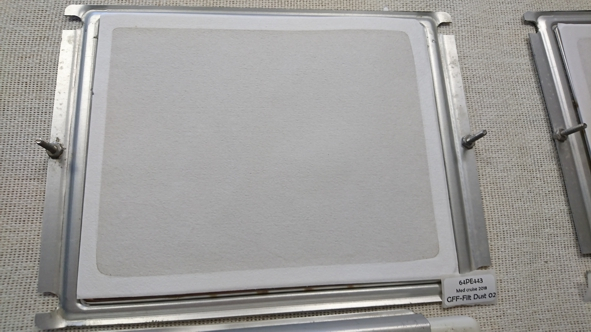
Saturday 11 August: recovering and re-deploying the sediment trap
Today was dedicated to the recovery of our sediment-trap mooring, which has been collecting material (organic material produced in the ocean's surface, fossil remains of marine life as well as Saharan dust) that has been sedimenting down towards the sea floor. This material is intercepted by the trap, which consists of a large funnel with 0.5m2 diameter at the top, and which ends in a cup. This cup is attached to a carrousel on which there are 19 other cups. What's more, the sediment trap that we are using here consists of two carrousels, so that we actually have 40 cups at our disposal. At the previous deployment in 2017 by Juliane Steinhardt, the trap was programmed such that each cup was positioned below the funnel for a period of ten days.
There are a lot of things that can go wrong with such moorings; battery houses may leak and cause them to fail, the bottom releaser may not receive commands from the ship, rotating parts may get stuck, fish may jam the sampling cup, material damage may cause troubles.... Unfortunately, we have ample experience with any variety of the aformentioned problems and therefore it is always very exciting to recover a mooring. In this particular case it was extra exciting because until now there had always been some mysterious problems with the trap. However, NIOZ technician Bob Koster found out that there was a slight problem with the design and managed to fix it. He did this very well because for the first time all cups contain some material so that we have an excellent time series!
After servicing the mooring (checking all cables, connections, replacing sampling cups, batteries and some hardware) we re-deployed her for another year: happy sampling!
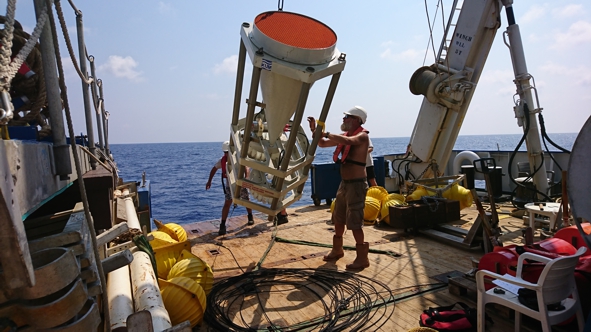
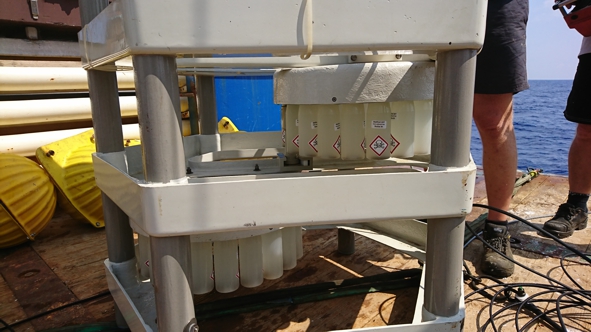
Friday 10 August: recovering the geodetic instruments
The first day is dedicated to recovering the equipment that Morelia Urlaub (GEOMAR - Kiel, Germany) and her team deployed last year. Five geodetic instruments have been registering movements of the sea floor, which is very active in this part of the Mediterranean: movements of a few centimeters at earthquakes are very common, and it seems that movements even occur without earthquakes.
After having released the instruments one by one, they were towed by the dinghy towards the ship and then hoisted on deck.
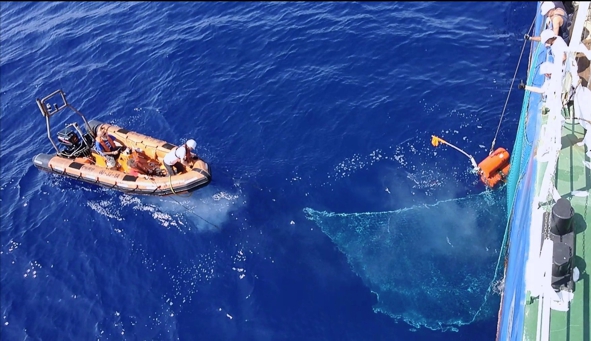
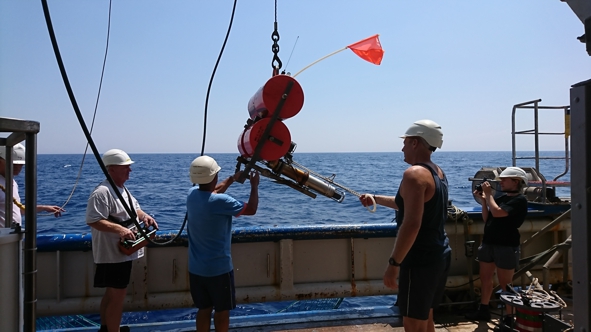
Thursday August 9th: Dust is in the air?
Below you see a satellite photo provided by NASA from their earthobservatory website. It looks a lot like dust coming Libya, although it could also be sun glint. IF it's dust, we'll certainly try and collect it!
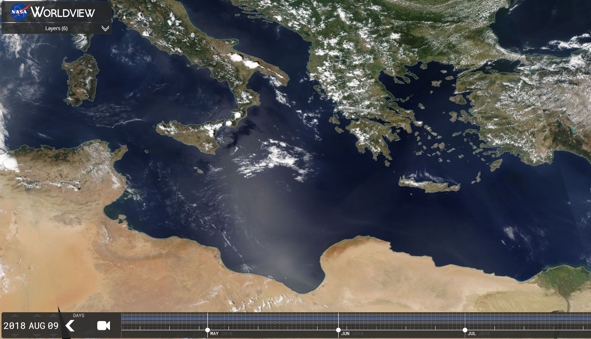
Thursday August 9th: Local colleagues visiting RV Pelagia
Colleagues from the University of Catania heard about RV Pelagia being around and they were very keen to get a personal tour around the ship. They were very impressed and are very motivated to expand collaborations with us in order to sail with us! In the background one can just see Mount Etna. L2R: Francesca Toscano, Carmelo Monaco, Nerina Ferrito, Erminia Conti, Christian Mulder and Jan-Berend Stuut.
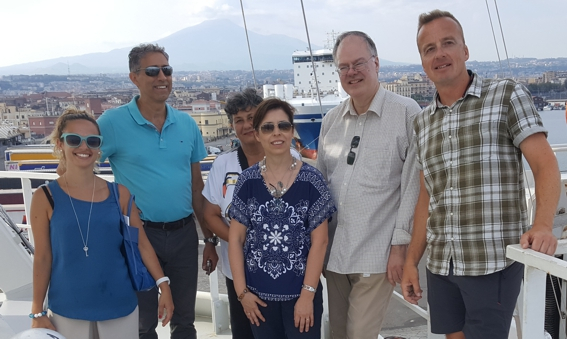
Wednesday August 8th: Pelagia in Catania harbour
This photo was taken from the center of town towards the south and you can see the houses of the three most important people in Catania: the mayor, the archbishop, and the rector of the university, who are all living near the Piazza del Duomo. In the far background you can just recognise RV Pelagia in the harbour.
